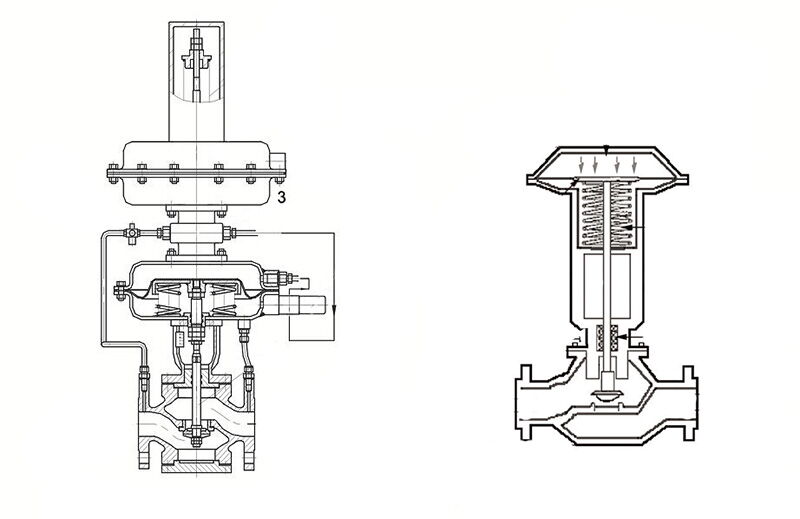
Control valves, including actuators and valves, are important components for regulating process parameters such as media flow, pressure, temperature and level. They do this by receiving control signals from the control unit and using the actuator to operate. Control valves can directly manage pressure and flow.
Self-operated control valves utilize the medium's own pressure and temperature as a source of energy to actuate a plug that regulates the valve opening. This allows automatic regulation of pressure, flow and temperature without the need for an external power source or auxiliary instruments. Self-operated control valves are typically used to control upstream or downstream pressure.

Self-operating: they do not require an external power source or control signal.
Upstream and downstream control: they regulate both upstream and downstream pressures.
Residuals: they operate as purely proportional control systems with some residuals, mainly focused on maintaining set pressure rather than precise flow control.
Self-operated valves: the accuracy depends on the accuracy of the spring and diaphragm. Typically, they achieve a control accuracy of about 10%, with an optimum accuracy of about 5%.
Pneumatic control valves: These depend on the precision of the transmitter and regulator. For example, control valves from MFRS can achieve a static accuracy of 0.3% to 0.5%, which is significantly higher than that of self-operated valves. Pneumatic control valves are preferred for applications requiring high regulation accuracy.
Pneumatic control valves: allow remote control via a distributed control system. They enable rapid adjustment of input signals, valve openings, set values and sequencing of recorded test values.
Self-operated control valves: set values are usually fixed and can only be adjusted manually on site. They are less intelligent and are more suited to applications where set values do not need to be changed frequently, such as equipment lubricant supply. They depend on the pressure of the medium, which makes them unsuitable for corrosive media or media containing particles.
Self-operated control valves: careful consideration needs to be given to the pressure control points before and after the valve to ensure proper spacing. For steam piping, the actuator should be installed downward with the pressure point connected to the condenser at a location higher than the actuator but lower than the steam piping to prevent steam damage. In gas or liquid applications, the actuator should be mounted upward with the pressure point at the top of the piping.
Pneumatic control valves: simple to install and focused on meeting valve spacing design requirements without special considerations.
The main differences between pneumatic and self-operated control valves are their regulation accuracy, application conditions and installation requirements. Pneumatic control valves offer greater accuracy and remote control capabilities, making them suitable for applications that require frequent adjustments and high accuracy. On the other hand, self-operated control valves are well suited for applications that require autonomous operation without an external power source or frequent setpoint changes.
